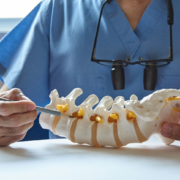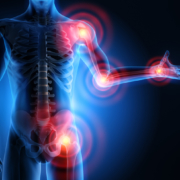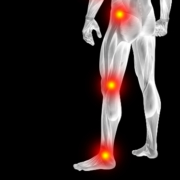3 Benefits Chiropractic Patients Enjoy
It’s no secret that we’re a little biased when it comes to chiropractic care. We believe in it, we’ve seen how great it works, and our many happy patients are a great testimony to how well it works.
Still, there are some nay-sayers who believe that medical treatments are the only way to treat health care concerns and health conditions. While we do believe that medical treatments do indeed have their place, we also know for a fact that chiropractic offers far more benefits, provides faster results for many neuromusculoskeletal conditions. By providing a non pharmacological option for pain management, chiropractic care provides far reaching care that goes to the heart of the problem instead of just treating the symptoms.
If you’ve chosen to incorporate chiropractic care into your health plan, you’ve made a very wise decision. There are many benefits that chiropractic patients enjoy. Here are three great advantages that chiropractic care will provide – and they’re big ones.
1. Chiropractic treats the root of the problem while “the others” only treat the symptoms.
Modern medicine certainly has its place. It has helped many people. However, it tends to be rather short sighted when dealing with many neuromusculoskeletal conditions.
Chiropractic, on the other hand, seeks to find the root of the problem, to address the reason the patient is having the problem and correct it.
For instance, if a patient came in with back pain, a medical doctor may prescribe painkillers and invasive treatments. Their goal is to stop the pain.
However, a chiropractor will try to find out why the patient’s back is hurting and address the cause while treating the pain without medications or invasive procedures.
2. Chiropractic is completely natural and noninvasive, “the others” rely on drugs and surgery.
Chiropractic is entirely natural, using spinal adjustments and other techniques, combined with nutritional advice, lifestyle recommendations, and all-natural supplements.
“The others” are more reliant on medications that are often largely synthetic and have unpleasant, even dangerous side effects. Some medications are even addictive. Surgeries and other invasive procedures can leave you with difficulty in mobility and limited range of motion as you heal.
When you visit a chiropractor for your back pain, he or she will not only adjust your spine, they will also talk to you about your daily activities, habits, even how you sleep. They will make recommendations about things you can do to prevent the pain and strengthen your back. It may mean making some changes or doing some special exercises, but your treatment will be tailored specifically to you and your needs.
3. Chiropractic treats the body as a whole but “the others” only treat what’s hurting now.
Medical treatments tend to treat what’s hurting right now but rarely look beyond that to see how the whole body is affected. What’s more, they don’t tend to look at what is causing the problem, treating the body in parts.
This is unnatural and not the best way to combat pain and many neuromusculoskeletal conditions. It may work for a while, but eventually issues in the body will manifest in other areas as well.
For instance, a problem with the hip may manifest as knee pain. The doctor treats the knee but does not address the hip (which is the cause of the problem). Eventually, the hip worsens, and the back, knee and ankle become affected. The hips and other joints on the other side may also become affected as the body tries to compensate.
Chiropractic treats the body as a whole, not as parts. It finds the cause of the problem and addresses that while also treating the part that is in pain.
Chiropractic also looks at lifestyle, diet, habits, even relationships so see where you could have stressors or things that could be posing a risk to your health, making your neuromusculoskeletal condition worse or more difficult to treat.
To learn more about our office, visit our website @ ocwc.ca.
[/av_textblock]










